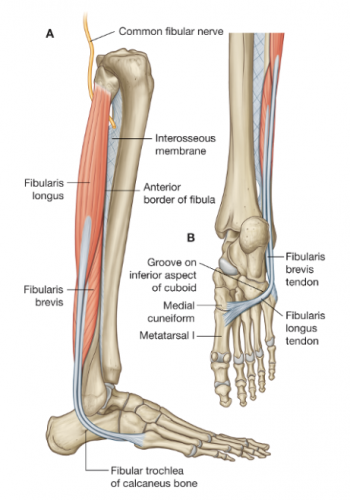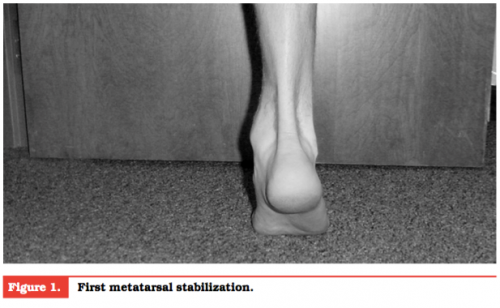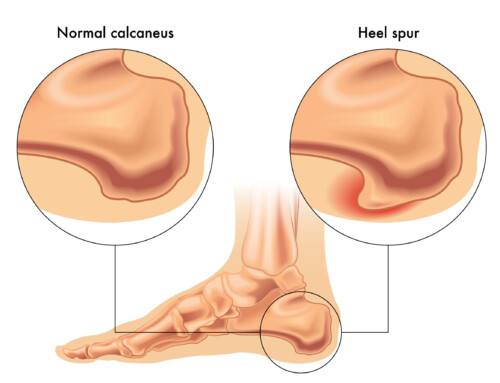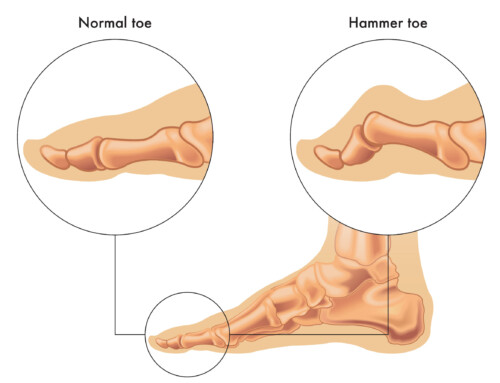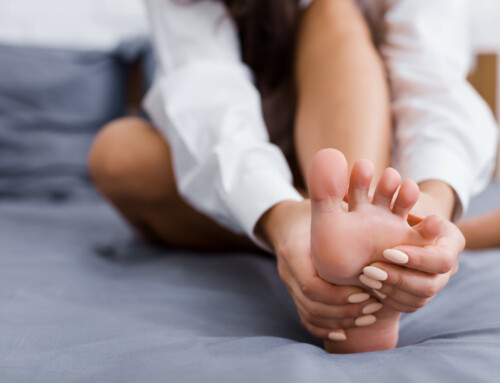By Ryan Wilkins, SPT
The Peroneus Longus
The peroneus (fibularis) longus is a muscle that is often the focus of a variety of rehabilitation programs in which there is pain or dysfunction within the ankle/foot complex.1 In simple terms, the peroneus longus helps with pointing your foot down (plantarflexion) and out (eversion).2-4 This muscle originates from the fibula, which is a long bone on the outside (lateral) aspect of the lower leg (Figure A).2-4 The tendon of the peroneus longus then travels across the bottom (plantar) surface of the foot to attach to two important bones: the medial cuneiform, and 1st metatarsal (Figure B).2-4
Given its anatomical position, the peroneus longus actually serves to stabilize the 1st ray (which includes the medial cuneiform, 1st metatarsal, and big toe) during activities such as walking and running (Figure B).2-4 As you begin to push-off of the foot to take the next step, the peroneus longus acts to bring the 1st ray to the ground.3,4 This helps provide the foot with enough force to propel you to the next step.3,4 Taking this into consideration, ideal assessment and neuromuscular reeducation of the peroneus longus should be in weight-bearing postures.3,4
Functional Assessment of the Peroneus Longus
There are two functional tasks that can be assessed to determine how well the peroneus longus is able to provide stability to the foot and ankle during weight-bearing postures.
Heel Raise. The first task requires patients to do a heel raise on two legs. If the peroneus longus is properly recruited, the bottom of the big toe (head of the 1st metatarsal) should maintain firm contact with the ground (Figure 1).4 Inadequate peroneus longus activation would result in a shift of the body weight to the outside of the foot (4th or 5th metatarsals) (Figure 2).4 Patients can be challenged further by performing the heel raise on one leg or with the eyes closed.4 This may reveal other compensatory strategies that should be addressed in a more comprehensive rehabilitation program.
Single Leg Stance. As discussed by Dr. Andrew Gaetano in his video called “Single Leg Stance with Feedback”, the single leg stance can give therapists a lot of information about how well the patient is able to remain stable. Performing the single leg stance barefoot allows for more specific assessment of the peroneus longus. Similar to the heel raise, we look specifically at whether the big toe can maintain contact with the ground; however, the patient must do this in a healthy way that doesn’t involve compensations at the trunk, hip, knee, and toes.
Facilitating Peroneus Longus Activation
Provided that the patient can tolerate full weight-bearing activity, recent research indicates that there are two exercises in particular that facilitate greater activation of the peroneus longus as compared to more traditional peroneus longus activation exercises.3,4 These two exercises specifically address the biomechanical function of the peroneus longus, and will carry over to functional activities such as walking and running.3,4
Quarter Heel Raise.3,4 With the use of a quarter, this exercise is specifically designed to provide tactile feedback 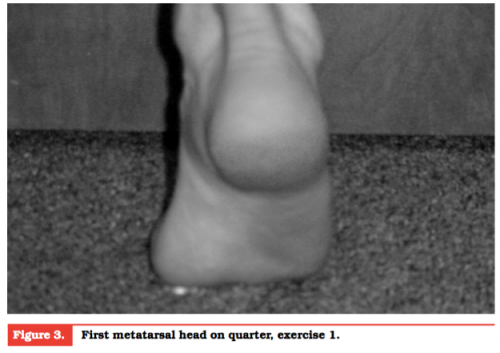
- With feet flat, stand facing the wall
- Place one quarter on the bottom surface of each big toe
- Over the course of two seconds, lift both heels while maintaining firm contact with both quarters (Figure 3)
- Over the course of two seconds, slowly lower both heels while again, maintaining firm contact with both quarters
- Perform 5 repetitions
- Progress exercise by performing with one leg, eyes closed, or without external support
Band Heel Raise.3,4 The next exercise is a more advanced version of the quarter heel raise and should be
- With feet flat, stand facing the wall
- Attach a theraband around the middle of one foot and anchor the opposite end of the band away from the body (Figure 4)
- Over the course of two seconds, lift the heel while making sure the big toe is in contact with the ground
- Over the course of two seconds, slowly lower the heel while making sure the big toe is in contact with the ground
- Perform 5 repetitions
- Progress exercise by performing with a more challenging theraband, with eyes closed, or without external support
References
- Louwerens JWK, van Linge B, de Klerk LWL, Mulder PGH, Snijders CJ. Peroneus longus and tibialis anterior muscle activity in the stance phase: a quantified electromyographic study of 10 controls and 25 patients with chronic ankle instability. Acta Orthop Scand. 1995;66(6):517-523.
- Drake RL, Vogl AW, Mitchell AWM. Gray’s Anatomy for Students. Philadelphia, PA: Churchill Livingstone Elsevier;2010.
- Bellew JW, Frilot CF, Busch SC, Lamothe TV, Ozane CJ. Facilitating activation of the peroneus longus: electromyographic analysis of exercises consistent with biomechanical function. J Strength Cond Res. 2010;24(2):442-446.
- Bellew JW, Dunn S. Ankle rehabilitation: a reintroduction of the peroneus longus. Strength Cond J. 2002;24(2):61-63.

